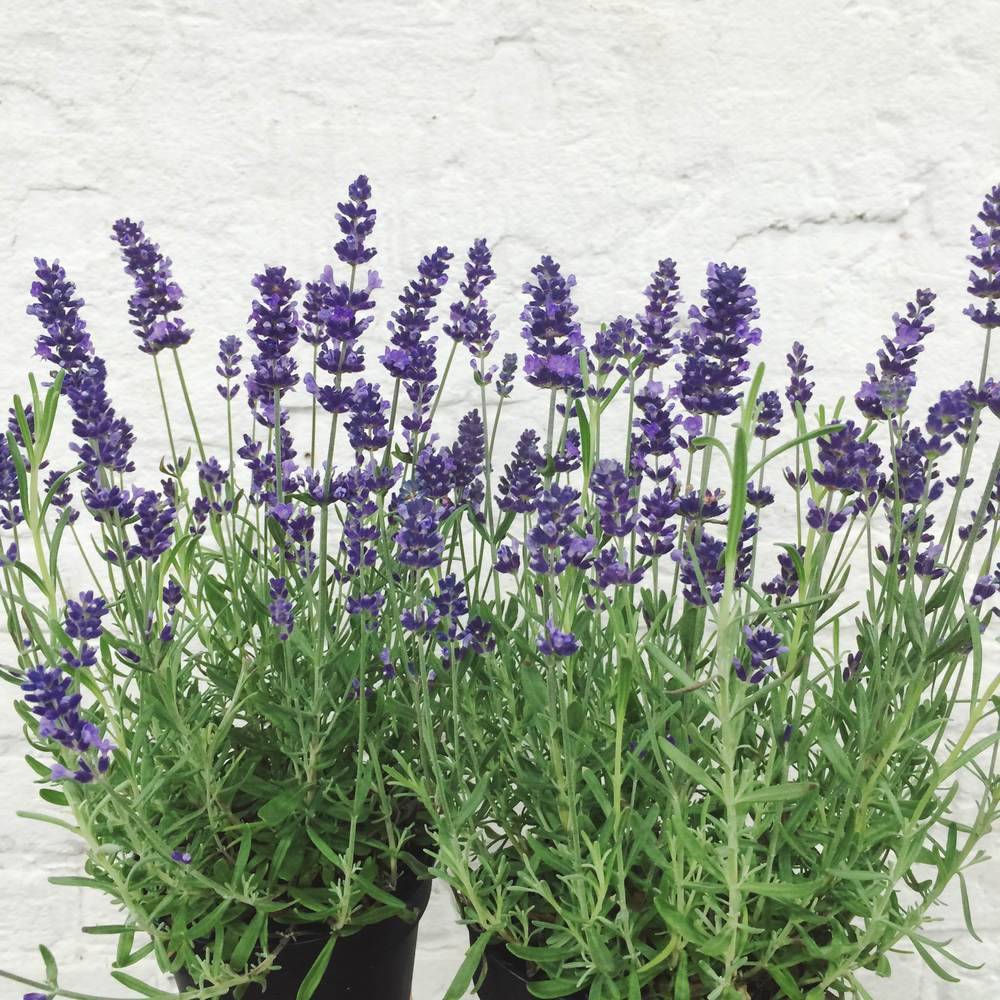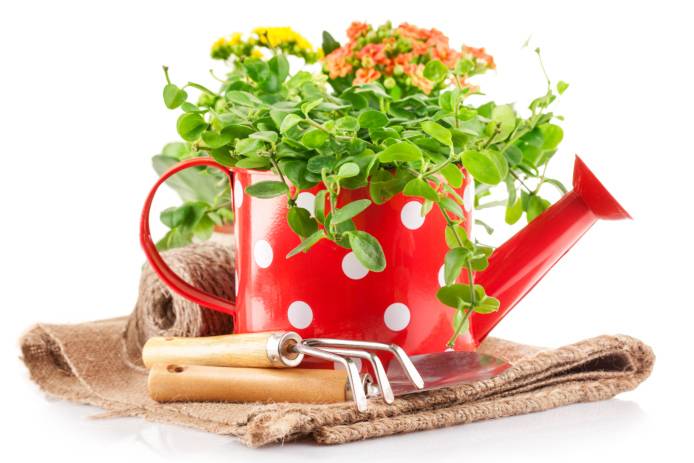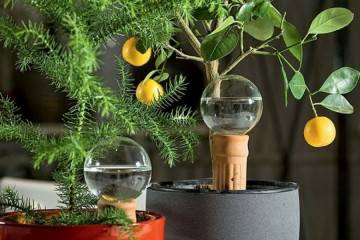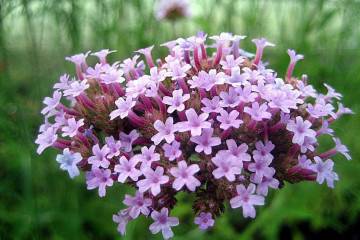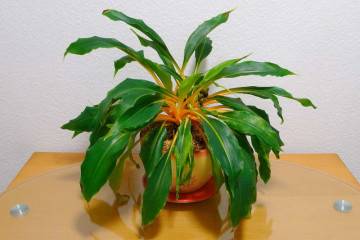Lavender in a pot on a windowsill
Content:
A "native" of the sunny Mediterranean - lavender is rarely found in summer cottages, in flower gardens in parks and squares. But fragrant inflorescences attract butterflies and bees, delighting the owners with flowering all summer. In landscape design, lavender bushes are used for planting in mixboards, on alpine slides, singly.
Lavender is a herbaceous essential oil and ornamental plant that belongs to the Lamiaceae family. Moths and mosquitoes do not like its delicate soothing aroma, therefore, growing such a plant on a windowsill, you can decorate an apartment and make the atmosphere in it calmer and healthier.
Blooming lavender in a pot is a demanding result, but one who is not afraid of difficulties will surely achieve it. How to grow lavender at home, in more detail below in the article.
Features of the root system of the flower
Growing any plant in a pot at home should start with studying its features. The root system of lavender is very powerful, its size is approximately equal to the size of the aerial part. Its peculiarity is that the roots stop growing when they hit any obstacle. Therefore, when grown indoors, the bushes are transplanted annually.
Difficulty boarding and transferring
The procedures themselves are not complicated, if we take into account the characteristics of the plant, its requirements for the substrate and environment.
A homemade lavender transplant is required if:
- 12 months have passed since the previous transplant;
- the bush has stopped growing;
- it became necessary to divide the bush.
Varieties of pots
Producers delight florists with a huge variety of flower pots. They differ in material, volume, shape, color, decorative and structural elements.
Flower containers are often made of clay, plastic, and ceramics. More rare specimens of wood, metal, glass, pressed paper, polycarbonate.
Pots
A cache-pot is a type of flower pot. It is distinguished by its absence of drainage holes. The cache-pot is used for decorating clay or in those places where it is necessary to exclude water leakage into the drainage hole. You can plant lavender in a flowerpot only if the following conditions are met:
- organization of high-quality drainage;
- spot irrigation with constant control of soil moisture level.
Flowerpots
The flowerpot is more decorative. It has the shape of a vase or basket, decorated with various decorative elements.
The size
Lavender is demanding for planting containers. In addition to the light color, you need:
- volume not less than 2 liters;
- inner diameter of the pot - 30 cm or more;
- oblong (container) or compacted (3-4 times the width of the height) shape.
Material
The most environmentally friendly option is clay pots. They are breathable, do not allow water to stagnate at the roots, their natural color matches perfectly with the plant. Of the minuses: in dry air, the earth in them quickly dries up; if waterlogged, white lime stains or mold may appear on the pot.
In the manufacture of ceramics, glaze is used, so ceramic pots are freed from the negative features of clay, while maintaining their positive features.
Plastic pots are good for their durability, rich palette and variety of shapes. Of the unattractive qualities - low-quality plastic pots can release hazardous substances into the soil and air. Any plastic practically does not decompose in nature, therefore, plastic thrown into a landfill will lie there for more than one hundred years.
Price
The cost of pots for home flowers depends on many factors: material, size, decor and additional elements. There are very cheap small plastic and insanely expensive metal flowerpots for sale. You need to choose the one that suits your taste and suits the flowers.
Designer
The flight of the designer's imagination is not limited by anything. Modern artists use an impressive range of materials, creating sometimes completely unimaginable masterpieces, turning a banal flower pot into a work of art.
One of the latest trends in design is combining with other interior items. You can see a lit pot, a pot combined with a mini aquarium, a chair, a table top, and even a dog kennel.
Which is the best fit
The pot must be light. Dark walls heat up faster in the sun, a clod of earth dries up. And the color combination of a light flowerpot, lavender inflorescences and pubescent greenery pleases the eye and evokes associations with the Mediterranean coast.
What conditions need to be considered when choosing:
- when planting young plants. When planting young plants, you need to remember that after the formation of roots, a period of active growth will begin. This means that the pot must be selected so that the root system has a place for development, but at the same time, while the plant is young, there is not a lot of soil free of roots. The required volume is approximately 2 liters;
- when transplanting old ones. Old plants are replanted annually. If it is necessary that the lavender bush continues to grow in size, then the pot is taken larger than the old one. If the plant should remain the same size, the roots are shortened during transplantation, and the size remains the same;
- with different types of watering. If it is possible to provide regular spot watering, then you need to opt for a clay pot. Otherwise, it is better to choose ceramics or plastic, providing the lavender with high-quality drainage;
- landing on the street. Lavender for outdoor gardening is planted in containers, flowerpots. It must be remembered that if there are no holes in the flowerpot for the outflow of water, a drainage layer at the bottom is required.
Lavender at home in a pot: planting and care
Depending on how you care for the lavender at home, a huge flowering bush or a couple of drooping twigs will grow in the pot.
Landing
Soil composition:
- 3 parts of sod land;
- 2 parts compost or humus;
- 1 part of calcined coarse sand.
Reproduction of lavender is carried out in different ways:
- air layering;
- cuttings;
- seeds.
Air layers are formed from the side stems of the bush, pinning a pot into the ground, if its size allows, or into small containers placed side by side. Rooting will take place in 2-3 weeks, after which you can separate the new plants from the mother. This is how lavender is propagated in early autumn or spring.
To obtain cuttings, take a healthy lignified shoot of the current year, preferably without buds and flowers. The cuttings are buried in pots, covered with plastic and placed in a warm, shaded place.After a week, the stalk is ready for transplanting to a permanent place.
To get lavender seedlings from seeds at home, you need to meet many conditions and perform various preparatory operations. The process is complex and time consuming.
Growing conditions
Optimal for lavender in a pot on a windowsill will be:
- direct sunlight for at least 8 hours a day;
- if possible, take out into the open air;
- in winter, the temperature in the room is not higher than 15 ° C and moderate watering;
- regular feeding in spring and summer. It must be remembered that lavender does not tolerate organic fertilizers.
Care
Agricultural technology is not difficult, but some points are important. Homemade lavender in a pot requires the following care:
- weekly loosening of the substrate;
- water regularly and monitor the moisture content of the substrate and air;
- mulching;
- pruning excess, faded, dry stems in summer;
- top dressing in summer and spring with fertilizers containing potassium.
How to make a pot with your own hands at home
A handmade flower pot is not only budget saving, but also creating coziness in the house. Besides, such things are always exclusive, who knows, maybe the hobby will turn into a home business. Caring for lavender in a handmade pot is doubly enjoyable.
Available materials
For making pots at home, you can use:
- cement;
- vine;
- wood;
- coconuts;
- old dishes;
- used containers and packaging;
- unnecessary shoes.
Can the pot be reused
You can reuse the pots. This is contraindicated only if the plant in it was sick with incurable diseases, for example, root nematode or cucumber mosaic. The pot, freed from the previous flower, needs to be prepared in order to transplant a new plant into it: wash and disinfect.
Lavender can bloom and delight with aroma not only in the garden or in the country, but also at home. You just need to follow the simple rules of care 0 choose a pot and plant it correctly, and then monitor the annual transplant.
